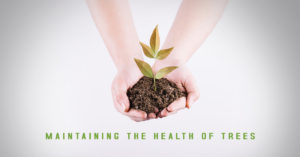
Maintaining good health for the tree is very tricky at times. Just like any human, trees also need daily care and attention. Any changes in the tree is a sign of something- either good growth or bad health. In case there is any issue with the tree, it should be handled on priority basis before the disease or the issue grows bigger and things become impossible to fix. Practicing tree healthcare can be less tricky if the sick tree is identified early in the stages. The methods for tree risk assessment can be as simple as just visual inspection and monitoring.
When you visually inspect a tree, you need to concentrate on all the parts, including the roots, leaves, branches and the trunk. There are various aspects that needs to be inspected for the purpose of tree risk assessment.
It is a great idea to start from the bottom of the tree. If you find any issues at the bottom part of the tree, there is a high possibility that the issue will be there in rest of the tree as well. Not just the presence, but also the intensity of the issue can be pretty alarming too.
Below you can find four ways to identify a sick tree and save it from getting into deeper problems:
- As stated earlier, concentrating on the bottom of the tree is the most important thing and the method to do so is taught in the tree care training programs. You should try to see if there are any soft spots or if there is a sign of decay anywhere in the roots. If there is a dodgy area that you can spot, better take a picture and inspect again in few days.
- Next level is to inspect the collar part. It is the spot where the roots and the trunk meet on the ground. For inspecting the collar, you might need to temporarily remove the grass or land-cover which might be obstructing the view. Make sure that the piece of the bark is not missing from anywhere. Even if the piece of the bark is about to fall or is broken, then also it is a problem. If there are cracks in the trunk, you can expect a problem coming your way.
- Going higher up, next in line is the trunk. Mostly, the trunks are never very smooth and even. You need to find deeper cracks which are longer in length. If they are present, it implies that the tree is weak structurally. You can take help from a certified arborist in Mumbai to know the intensity of the decay.
- Last step is to concentrate on the crown of the tree. You need to make sure that there are no limbs which are missing the bark or any hanging or broken branches. Even if there are any bare branches, then it could be a sign of a problem.
These were some quick and easy steps, but if you think they are overwhelming for you, then you can avail the services of an arborist in India to inspect the trees.
